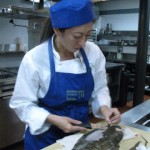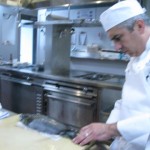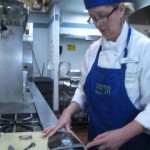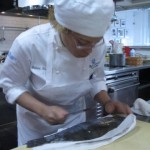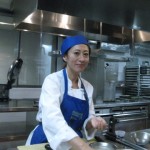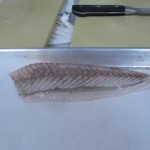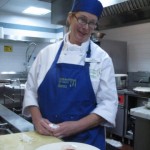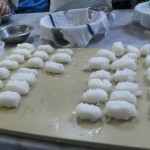Flounder is covered in very tiny scales, so scaling this fish requires a different technique, called, kokehiki, for which I use a very well sharpened yanagiba knife. Scaling is easier when the body of the fish is moist…that is, when fish is fresh and bathed in its natural moisture. Here I have a photo of Executive Sushi Chef Masato of 15 East demonstrating us how to do it properly. Other photos shows students working in very serious manner. The important tip of kokehiki is that you remove only thin layer of scale (thin paper like) but not the thin skin beneath. David is holding and showing his fish’s back after scaling both sides of the fish. You can tell that he is not happy with this result. You can see lots of patches of skin-removed areas. After they filleted the scaled fish, skinned it and cut it into sushi and sashimi slices for later sushi and sashimi use.
Another whole fish the students challenged was saba (mackerel). After filleting we cured it in salt and vinegar for preparation of saba no bozushi (pressed mackerel sushi).
We finished our last class with practice of nigirizushi rice balls (you can see the varieties!) and making of our own nigirizushi. Now we all know why good sushi is expensive – a chef has to start with fish which has very good quality; quality fish has to be handled by quality, experienced chef…Otherwise, there is no quality, delicious sushi.

